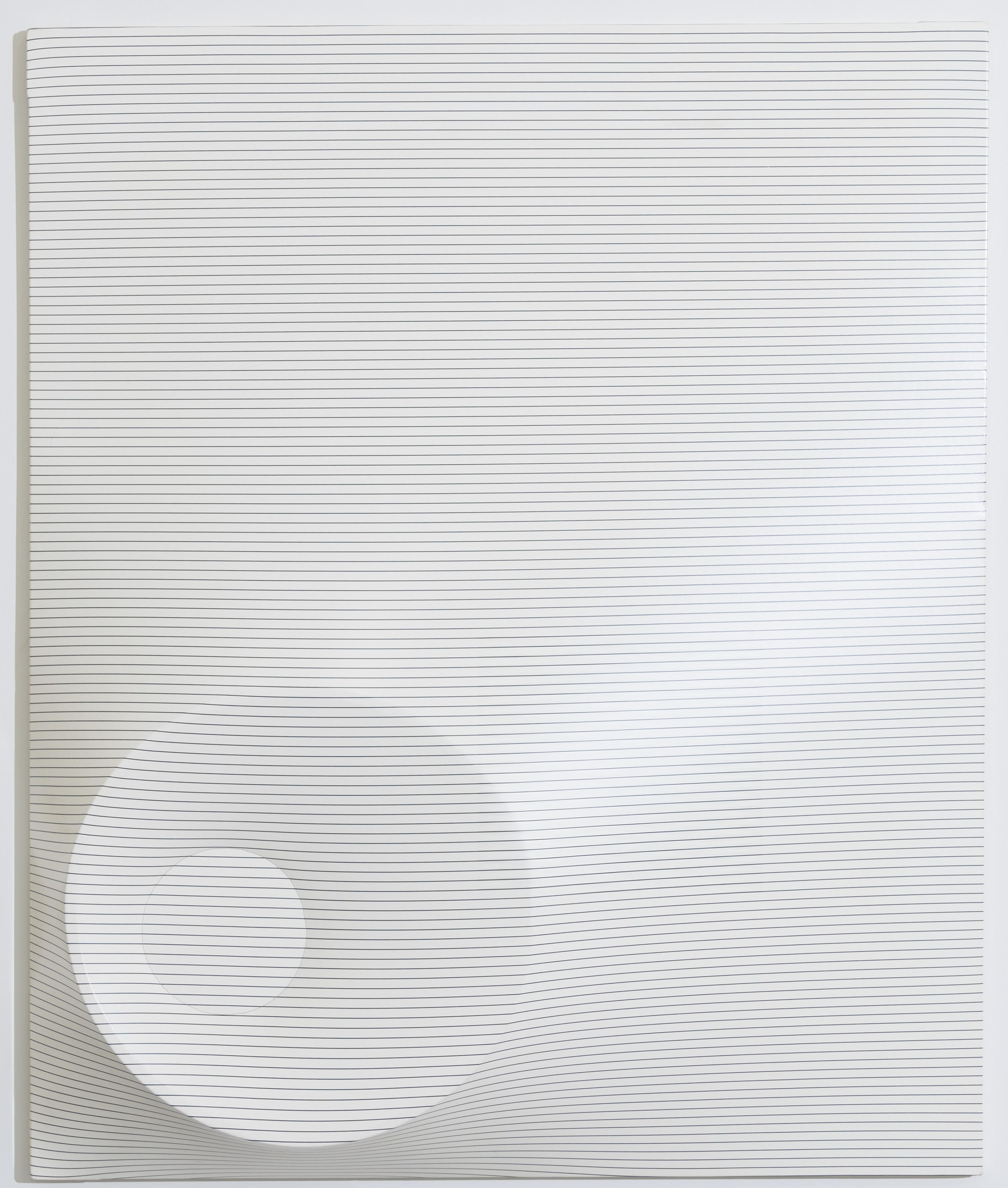Agostino Bonalumi
b. 1935, Vimercate, Italy
d. 2013, Desio, Italy
Bianco e nero (White and black)
1968
Shaped ciré
120 x 100 cm (47 1/4 x 39 3/8 in.)
Provenance
Private collection.
Literature
G. Dorfles, M. Meneguzzo, E. Thiemann, and K. Wolbert, Agostino Bonalumi. Malerei in der dritten dimension, exhibition catalogue, Bergamo, 2003, p. 171.
R. Barilli and A. Bonalumi, Agostino Bonalumi: Premio artista dell’anno 2006, exhibition catalogue, Belluno, 2006, p. 58.
F. Bonami and al., Italics/ Arte Italiana fra Tradiozione e Rivoluzione 1968-2008, exhibition catalogue, Milan, 2008, p. 113.
Mazzoleni Galleria d’Arte, Agostino Bonalumi Opere scelte 1964-2008, exhibition catalogue, Turin, 2008, pp. 26-27.
Oltre la Pittura. Bonalumi, Castellani, Fontana, Manzoni, exhibition catalogue, Turin, 2009, pp. 40-41.
L. Mattarella, Bonalumi. Razionalità e Apparenza, exhibition catalogue, Rome, 2011, no. 19.
S. Pegoraro, Agostino Bonalumi : the glass of shadows, works from the sixties to the present, exhibition catalogue, Siena, 2012, p. 47.A. Fiz and F. Bonalumi, Agostino Bonalumi, exhibition catalogue, Cinisello Balsamo, 2014, p. 88.
F. Pola, Bonalumi. Sculture, Milan, 2014, p. 109.
F. Bonalumi and M. Meneguzzo, Agostino Bonalumi. Catalogo Ragionato, II, Milan, 2015, p. 417, no. 378.
Mazzoleni Art, Bonalumi Sculptures, exhibition catalogue, London, 2015, p. 109.
Mazzoleni invites: Dimore Gallery / (Un)comfort zone, exhibition catalogue, 2017, p. 38.
M. Meneguzzo (ed.), Agostino Bonalumi 1958–2013, exhibition catalogue, Milan, 2018, p. 97, no. 48.
Description
Executed in 1968, Agostino Bonalumi’s Bianco e nero (White and Black) elegantly explores the space of its shaped surface, moulded with the artist’s signature formal delicacy and compositional judgment. A superb example of the Estroflessioni (or Extroflections) for which Bonalumi is best known, this piece shows the artist's innovative use of the industrial material ciré, which he had first come across only the previous year, 1967, in New York. This work is thus an important early example of his pioneering experiments with this medium, made even more daring by the mesmerising stripes of alternating black and white, an uncommon instance of the artist venturing beyond the monochrome for which he is most well-known.
The present work exemplifies the estroflessioni that Bonalumi sought to create. The ciré surface protrudes outward, breaking into the third dimension to create work that borders on sculptural. The undulating forms interact not only with the space beyond the canvas, but with its own surface, casting shadows upon itself, creating patches of light and dark, emphasising the material qualities of the medium. This act of breaking into the third dimension creates a work that not only goes beyond the picture plane, but redefines the picture plane itself, creating a vision of space and form both timeless and futuristic.
This sense of the artwork as both an image and an object was vital to Bonalumi’s sense of his practice – he called his estroflessioni ‘picture-objects’ – and his voluminous surfaces are imbued with an architectural quality that challenges the acceptance of the flat canvas as a ritual prerequisite for painting. In this attentive materialism, he shared artistic sensibilities and the aesthetics of the Zero group in Germany, as well as his generation of Italian artists who, in the wake of Lucio Fontana’s Spatialism, were transforming the illusionistic horizontal plane of the canvas by pursuing the physical space in and around its surface.
Indeed, Bonalumi joined Piero Manzoni and Enrico Castellani in the production of their influential journal Azimuth, before Manzoni’s tragic death in 1963. This was a publication whose materialism Manzoni had made clear: ‘We absolutely cannot consider the picture as a space onto which to project our mental scenography. It is the area of freedom in which we search for the discovery of our first images. Images which are as absolute as possible, which cannot be valued for that which they record, explain and express, but only for that which they are to be’ (P. Manzoni, ‘For the Discovery of a Zone of Images’, Spring 1957, Azimuth 2, 1960).




